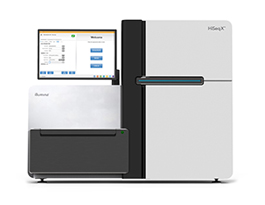 |
| The Human Genome Project was an ambitious project taken up by the National Human Genome Research Institute (NHGRI) and funded by the National Institute of Health (NIH) |
 |
| A quick comparison of the different types of sequencing platforms 454 is now owned by Roche, SOLiD by Thermo Scientific and Solexa by Illumina. |
 |
| HiSeq X Ten, the behemoth sequencer! |
 |
| True to its name, the MinION sequencer, from Oxford Nanopore Technologies! |
 |
| Representation of how a nanopore works and gives out sequencing data. |
On the basis of this conjecture, Illumina have requested the Court of California to stop the import of equipment made by Oxford Nanopore on US soil. Interestingly, they also claim that if a void, is created in the area of genomic services as a result of this ban, Illumina and other sequencing providers (Roche, who are planning to close down their sequencing business, Applied Biosystems, who are now part of Thermo Scientific and boast of ION torrent sequencers, based on SOLiD technology and Pacific Biosciences, whose latest sequencers is bigger and more expensive than llumina’s ) will be able to address it.
 |
| With their revolutionary technology, these guys are looking to sequence genomes of 300 dead people. Why? Read this blog post to know. |
Taking into consideration that Illumina has recently attacked their biggest clients BGI before they took over Complete Genomics, who also boast of a revolutionary sequencing technology , it is no surprise, that Illumina are fighting this legal battle, purely because Oxford Nanopore Technologies is a potential competitor now. Oxford Nanopore do not have regular customers but are valued at $1.4 billion dollars not very far from the Illumina, who have worked over a decade to reach this far. It, therefore, seems that this litigation is only to put a cog in the wheel and slow the progress of Oxford Nanopore. Illumina are probably working on a nanopore sequencer and its nearing completion and would like it be available along with the PromethION, so that they do not lose market share. Probably, the story is much worse. Illumina have nothing in the pipeline in terms of a nanopore sequencer but just a HiSeq 50 or 100 and as always, the MinION is ruining their best laid plans.
Reference:
Liu, L., Li, Y., Li, S., Hu, N., He, Y., Pong, R., Lin, D., Lu, L., & Law, M. (2012). Comparison of Next-Generation Sequencing Systems Journal of Biomedicine and Biotechnology, 2012, 1-11 DOI: 10.1155/2012/251364


